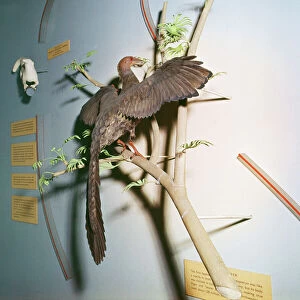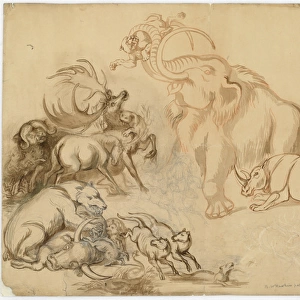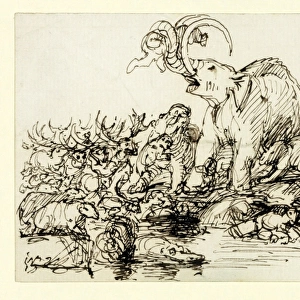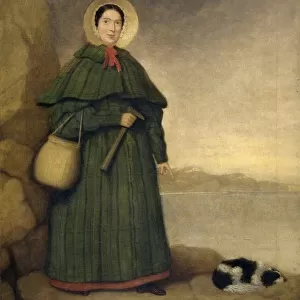Home > Animals > Extinct > Dinosaurs
Tupus diluculum, Bolsover dragonfly
![]()

Wall Art and Photo Gifts from Mary Evans Picture Library
Tupus diluculum, Bolsover dragonfly
Painting of Tupus diluculum (Bolsover dragonfly), a giant dragonfly from the Upper Carboniferous (354 to 290 mya)
Mary Evans Picture Library makes available wonderful images created for people to enjoy over the centuries
Media ID 8598731
© Mary Evans Picture Library 2015 - https://copyrighthub.org/s0/hub1/creation/maryevans/MaryEvansPictureID/10704157
Anisoptera Ankylosaur Ankylosauria Archosaur Archosauria Archosauriformes Archosauromorpha Armored Dinosaur Armoured Dinosaur Arthropod Arthropoda Carboniferous Diapsid Diapsida Dinosaur Dinosauria Dinosauromorpha Dinosaurs Dragonfly Eurypoda Fern Genasauria Giant Habitat Hexapoda
EDITORS COMMENTS
1. Title: "A Glimpse into the Past: The Majestic Bolsover Dragonfly (Tupus diluculum) in the Carboniferous Era" 2. Description: This painting brings to life the enigmatic Bolsover dragonfly (Tupus diluculum), an ancient arthropod that once graced the Earth during the Upper Carboniferous period, approximately 354 to 290 million years ago. This colossal dragonfly, with its impressive wingspan, is depicted here in its natural habitat, surrounded by lush ferns and other vegetation. 3. Background: The Carboniferous era was a time of dramatic transformation for the Earth, marked by the rise of forests, the first forests, and the emergence of various plant and animal species. Among these early inhabitants was the Bolsover dragonfly, a member of the Anisoptera order, which is part of the larger class Hexapoda, including insects and arachnids. 4. Evolutionary Context: The Bolsover dragonfly is considered an early archosauromorph, a group of animals that includes dinosaurs, archosaurs, and their ancestors. It is characterized by several features that are common to both dragonflies and archosaurs, such as a biphasic life cycle (incomplete metamorphosis) and the presence of a diapsid skull, where the skull has two openings on each side. 5. Size and Significance: With a wingspan of up to 30 centimeters (12 inches), the Bolsover dragonfly was a formidable presence in the Carboniferous world. Its large size and striking appearance make it a fascinating subject for scientific study, offering valuable insights into the evolutionary history of both dragonflies and archosaurs. 6. Modern-day Connection: Though the Bolsover dragonfly is now extinct, its legacy lives on through the myriad of dragonflies and other ancient arthropods that continue to inhabit our planet today. This painting serves as a reminder of the rich history and diversity of life on Earth, and the importance of preserving and studying our natural world for future generations.
MADE IN AUSTRALIA
Safe Shipping with 30 Day Money Back Guarantee
FREE PERSONALISATION*
We are proud to offer a range of customisation features including Personalised Captions, Color Filters and Picture Zoom Tools
SECURE PAYMENTS
We happily accept a wide range of payment options so you can pay for the things you need in the way that is most convenient for you
* Options may vary by product and licensing agreement. Zoomed Pictures can be adjusted in the Cart.













